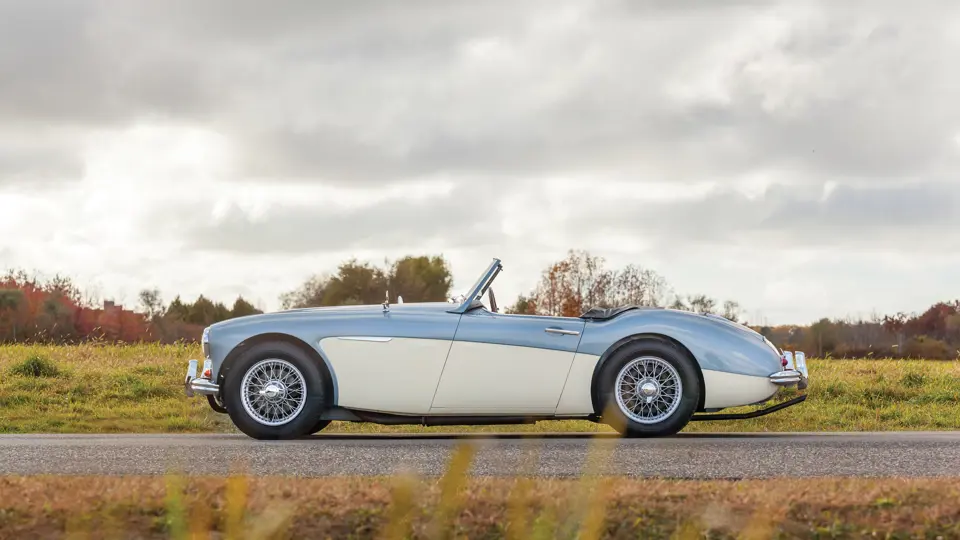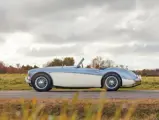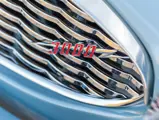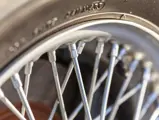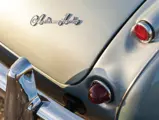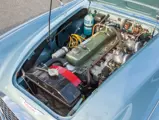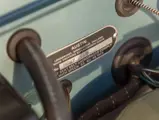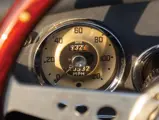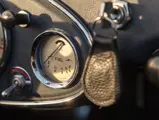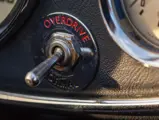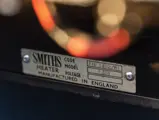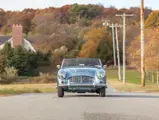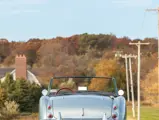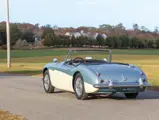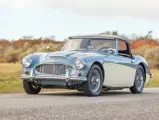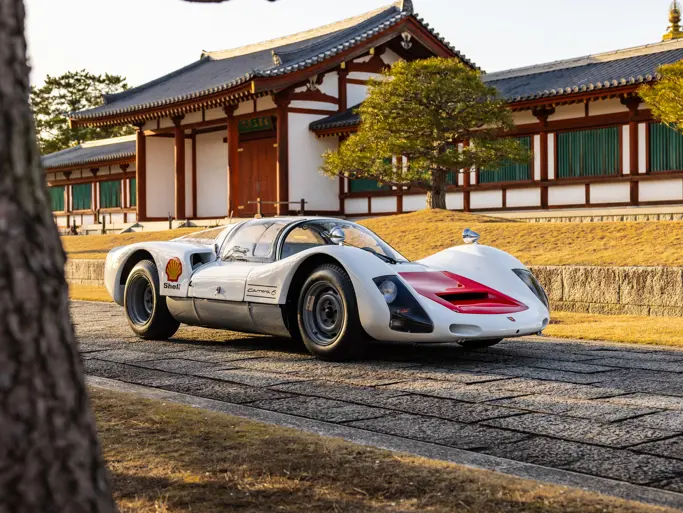124 hp, 2,912 cc OHV inline six-cylinder engine with dual 1¾-inch SU carburetors, four-speed manual transmission with Laycock de Normanville overdrive, independent front suspension with coil springs, live rear axle suspension, and Girling front disc brakes and rear drum brakes. Wheelbase: 92 in.
Following the debut of the original four-cylinder Austin-Healey 100 in 1952, and the subsequent change to the six-cylinder 100-Six in 1956, in 1959, the British Motor Corporation launched the car that would become the defining model of the range: the 3000. As it had a three-liter engine that could produce124 horsepower, it was the most powerful “Big Healey” yet, and BMC undertook an ambitious competition program to demonstrate its prowess in circuit racing and in the grueling European road rallies.
It is this very model, the two-seat 3000, that fired the imagination of sports car enthusiasts around the world with victories in the most punishing events of the time. This is the model that Pat Moss, sister of Sir Stirling Moss, drove to an astounding 1st place overall victory in the brutal and legendary 1960 Liège-Rome-Liège Rally. It is also the model in which she won the Coupe des Dames at the Geneva Rally in 1960 and the Ladies Cup at the Tulip Rally the following year.
Likewise, the Morley brothers, Don and Earl, scored an outright victory in the 1960 Alpine Rally in a two-seat 3000. Another factory team car finished 2nd in class in the 1960 12 Hours of Sebring, where it was bested only by a Ferrari 250 GT California.
This model is prized by collectors for its no-compromise two-seat design, as it doesn’t have the family-car pretenses of the concurrent four-seat model. It is also cherished for its rareness, as only 2,825 of the 13,650 total 3000 Mark I production, just 20 percent, were two-seat models. With production of the Mark I beginning in March 1959, this car, with a May 25–26, 1959, build date, is among the earliest examples of the model, further adding to its allure and collectability.
When it was originally dispatched to Chicago on June 4, it was equipped with all of the options available, which included the Laycock de Normanville overdrive. The overdrive, engaged by a toggle switch on the fascia, operates on third and fourth gears, to produce a total of six gear ratios, which makes long-distance cruising comfortable and leisurely. Additionally, this car was also equipped with wire wheels and road speed tires, a laminated windshield, a heater, and an adjustable steering column, adding to the overall style and driving comfort of an already capable machine. These original manufacturing details, verified by the Heritage Certificate, provided the blueprint for the current restoration and are included in the car today. This car is equally at home on mountain and country roads, as the Mark I’s 162 foot-pounds of torque gives it brisk performance anywhere, while also still covering over 20 mpg.
This example has traveled only approximately 500 miles since the completion of a professional ground-up, frame-off, bare-metal restoration. Photographs during and after the restoration process, as well as the original steering wheel, are also included. The quality restoration work shows a devotion to absolute authenticity, as NOS (new old stock) parts were applied, when available, and only the finest materials, paint, and body work were used. All rubber parts are new, as is the wiring harness, leather interior, top, carpets, chrome, side curtains with storage bag, and lead/bronze wheel hammer. Since the restoration, it has been properly maintained and inspected, and it is in immaculate condition.
The sale of this rare car, which has been finished in what many consider to be the quintessential Big Healey color scheme, Healey Blue and Ivory, and it has benefited from a complete and correct restoration. It offers an outstanding opportunity to own a classic, defining example of the marque, and it is one that is in superb condition.





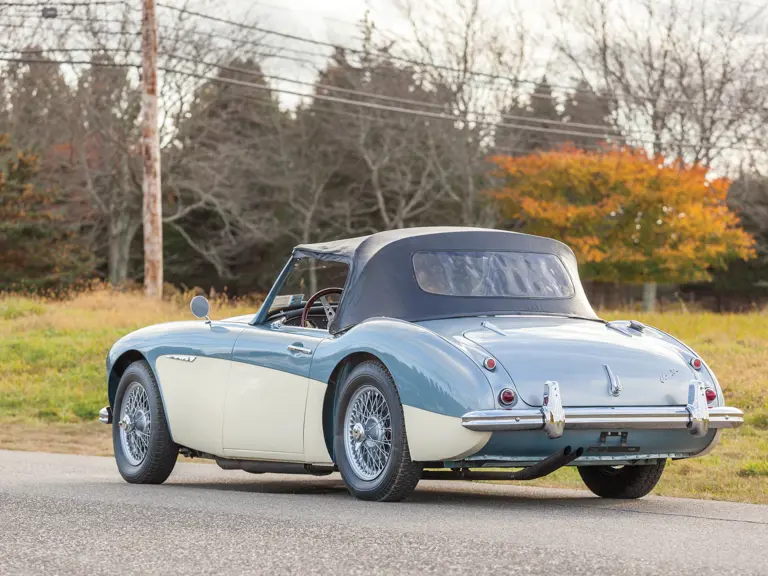
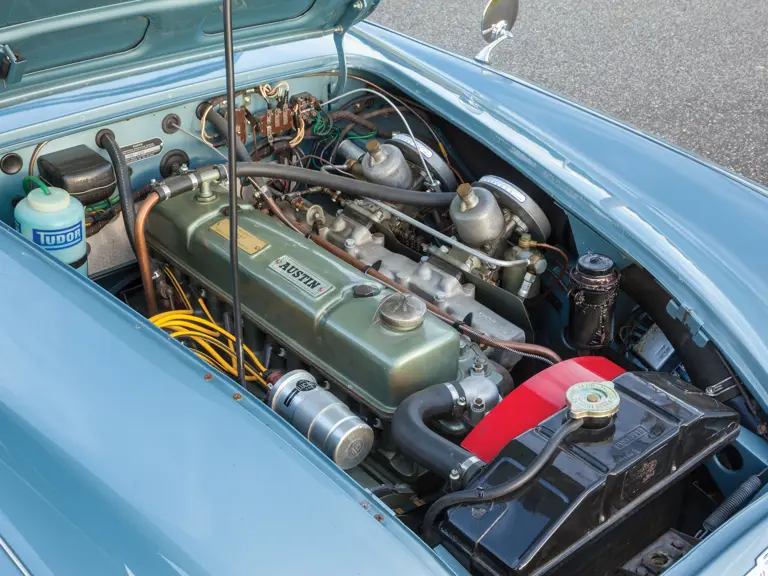
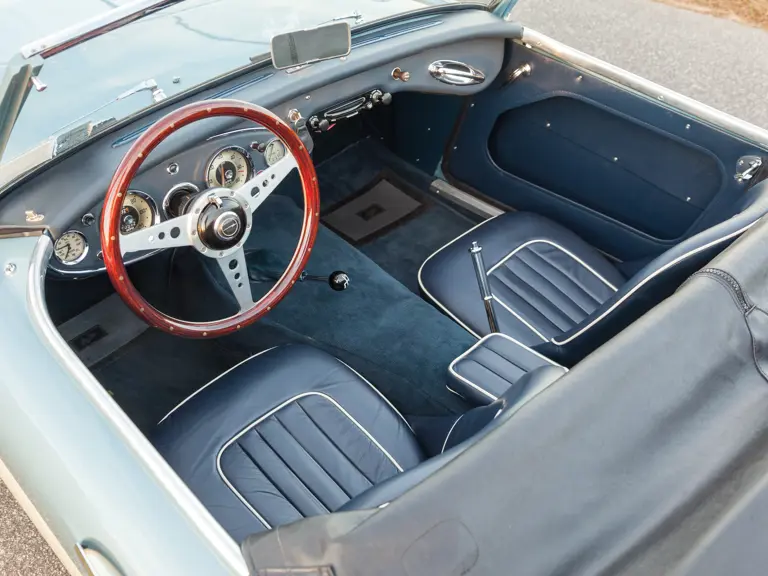
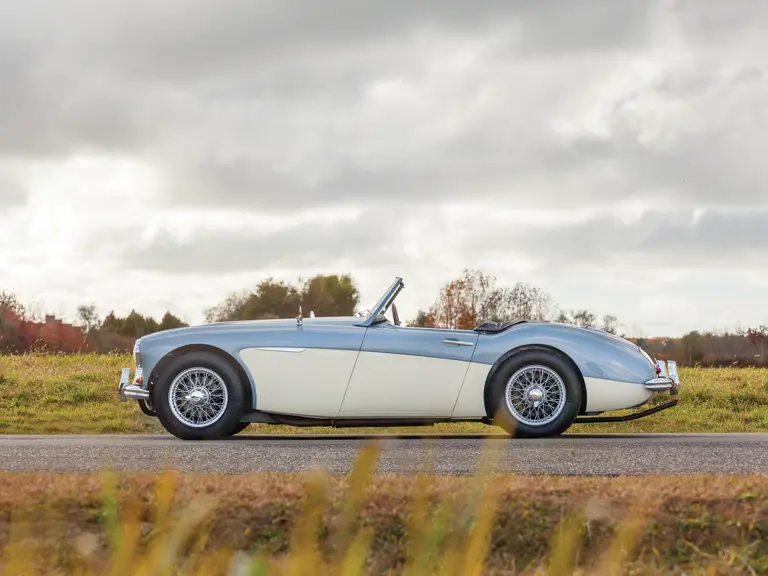
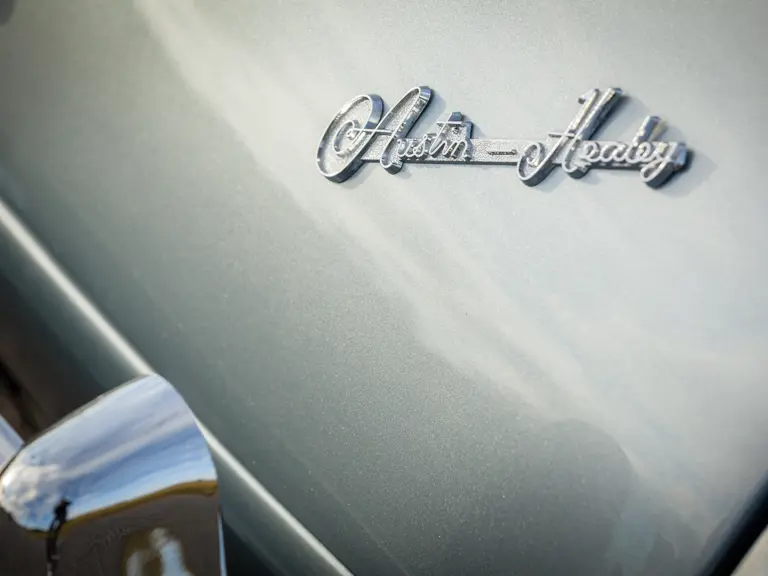

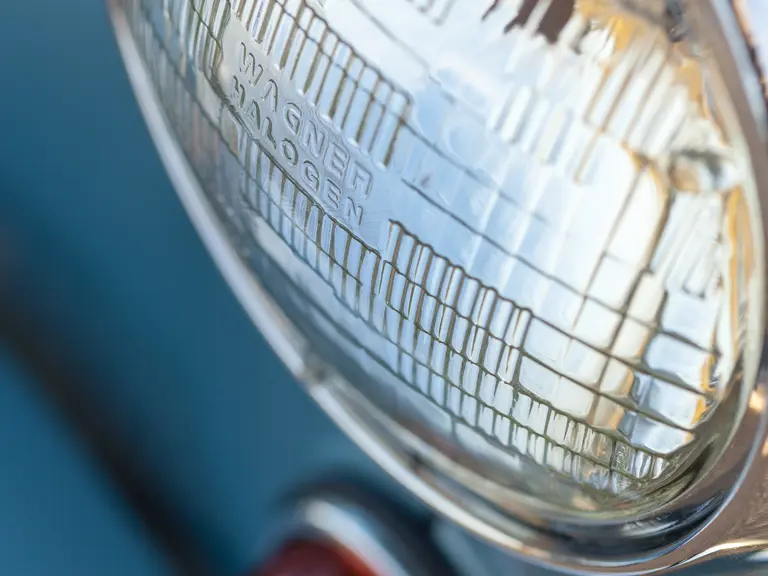
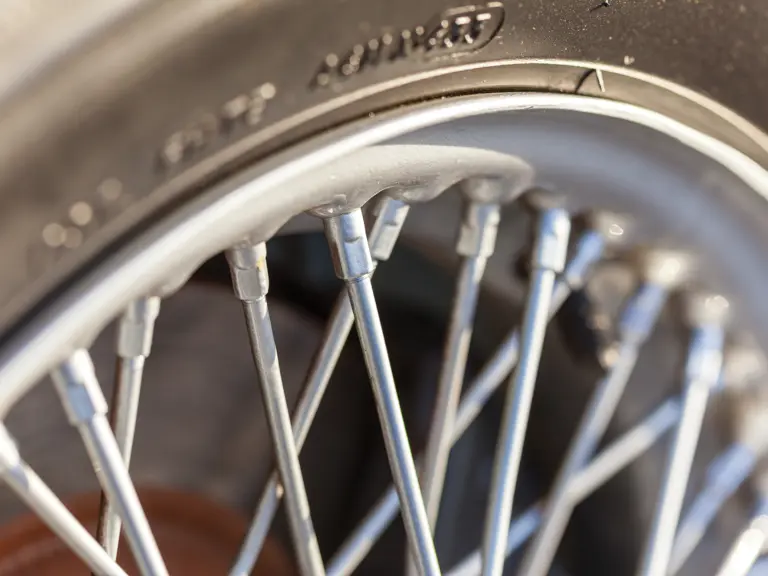
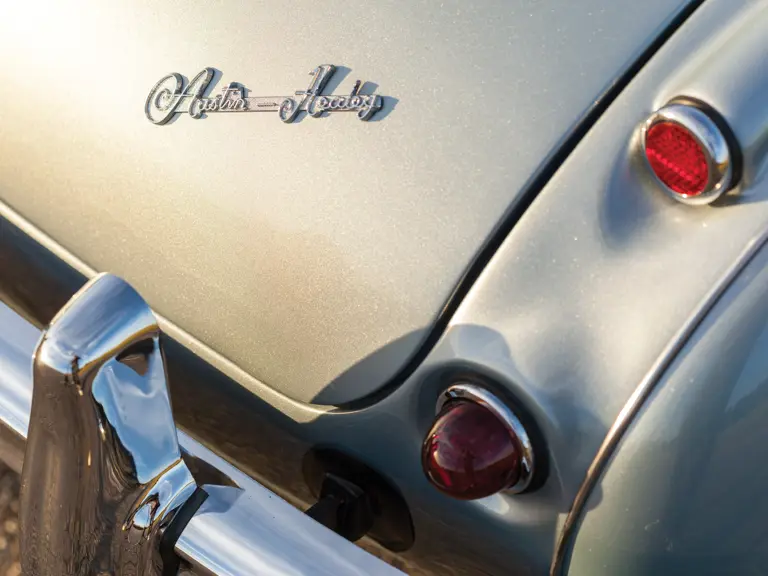
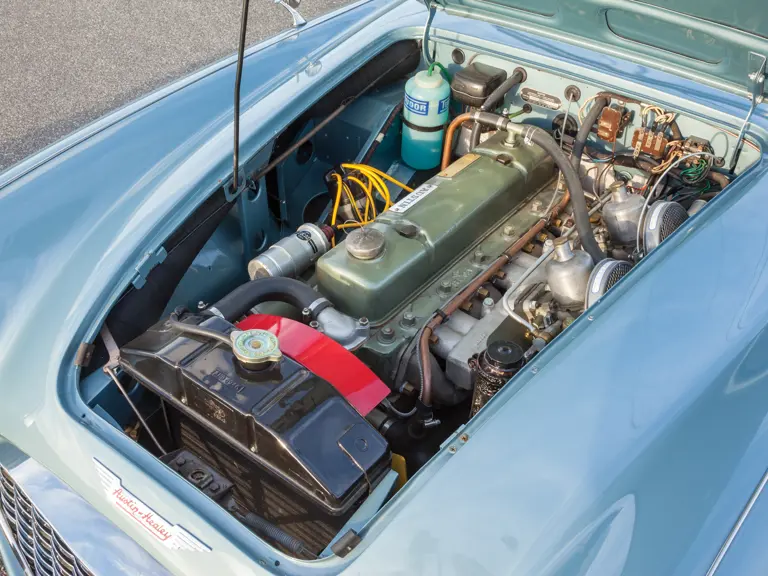
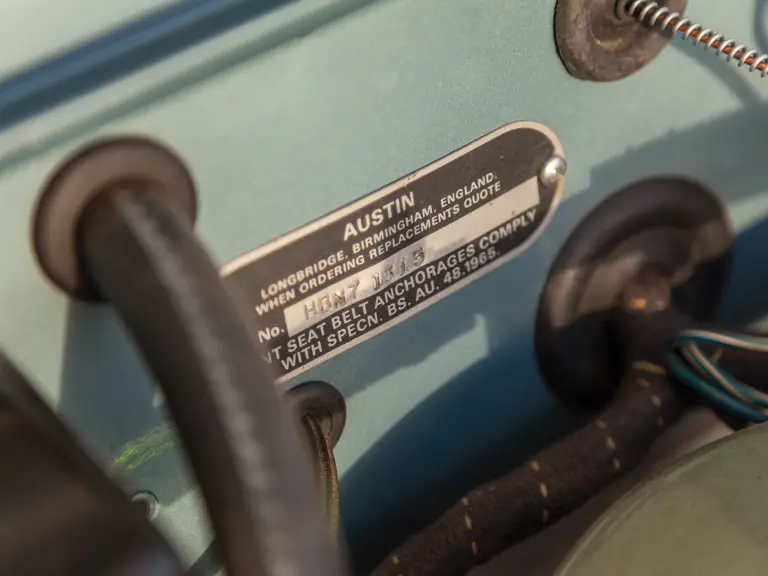
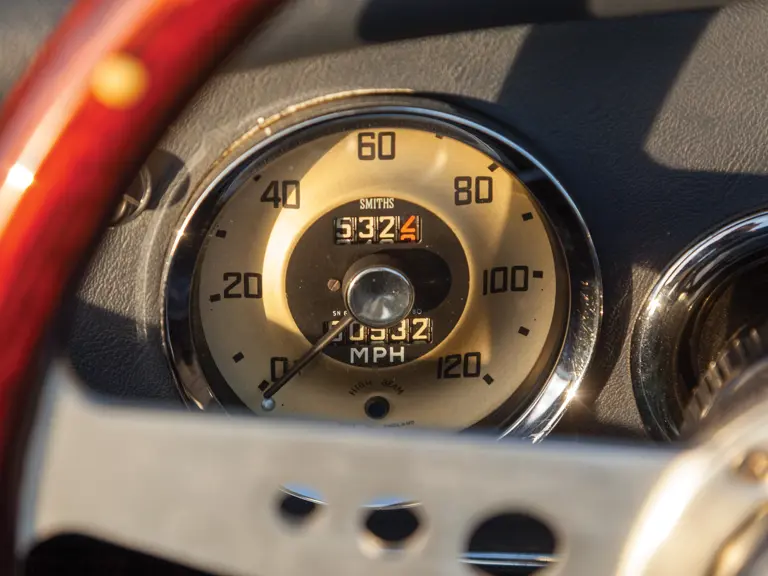



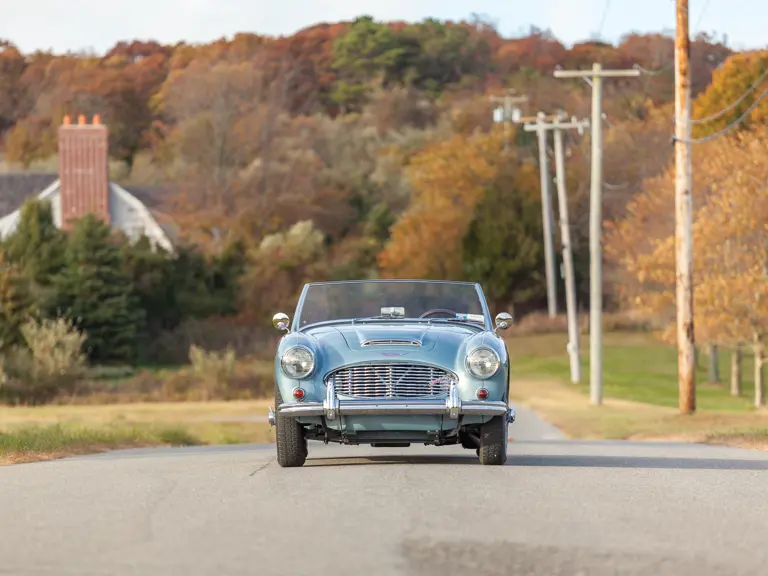
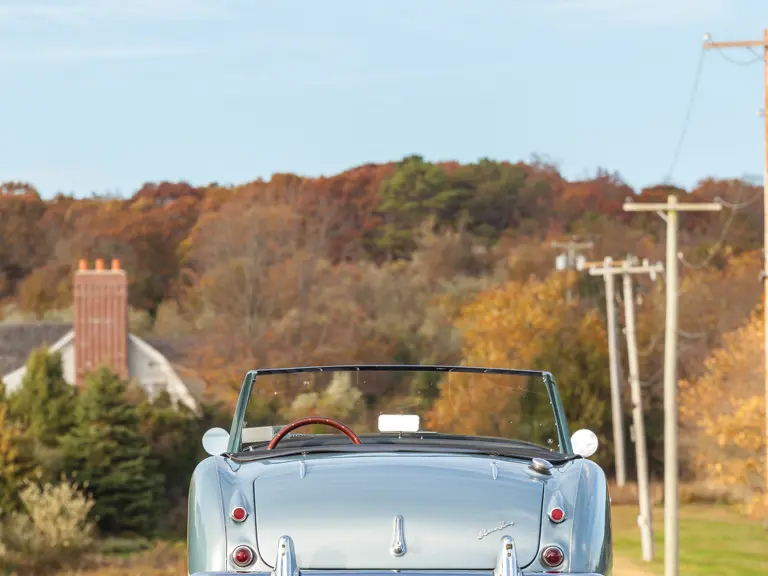
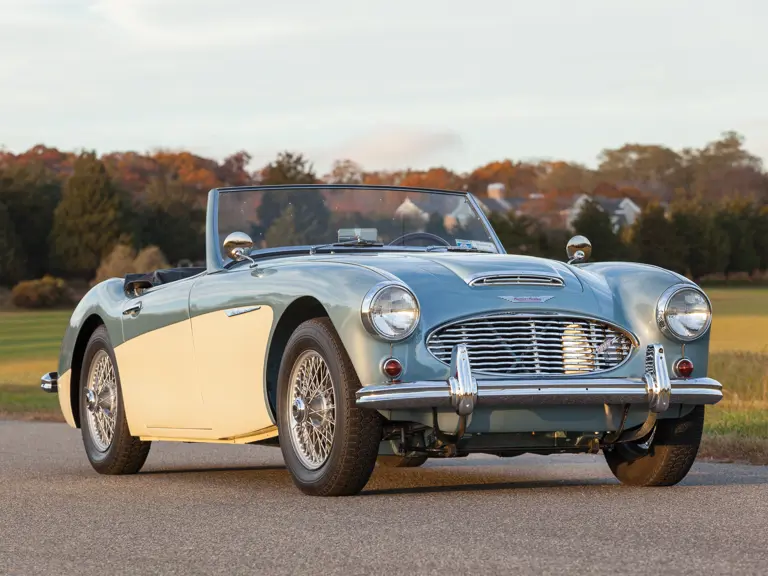

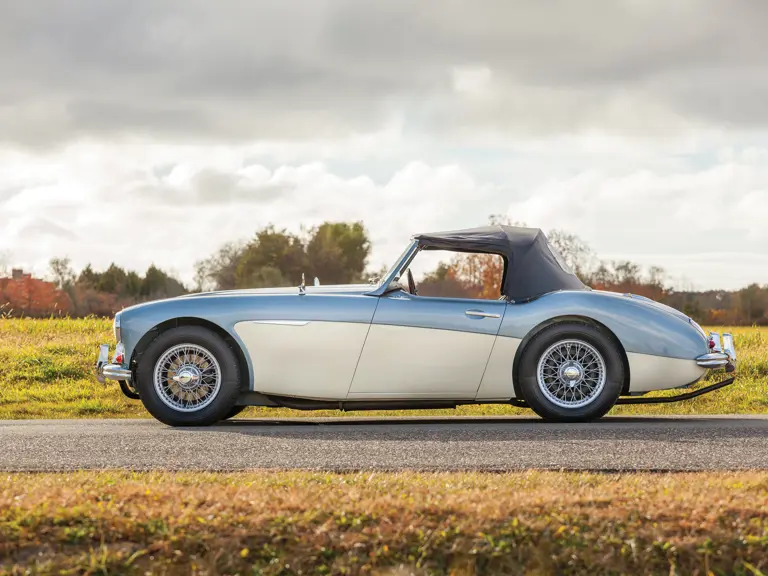
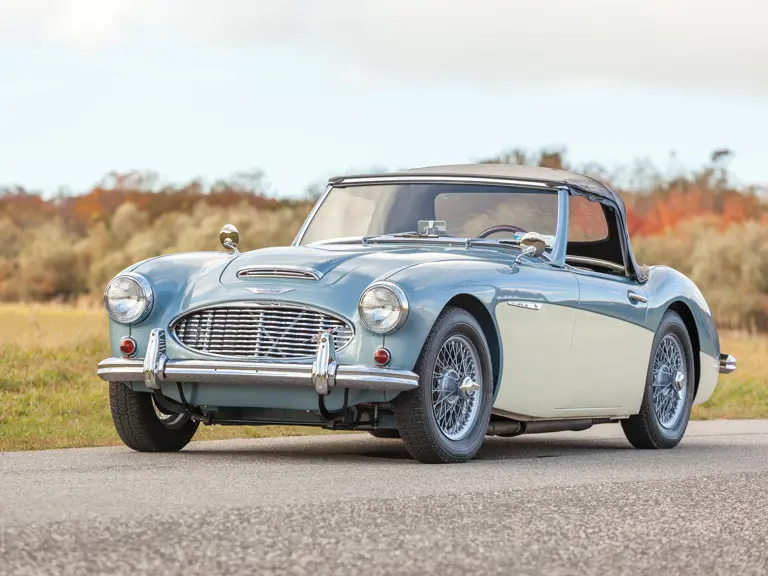

 | Amelia Island, Florida
| Amelia Island, Florida
